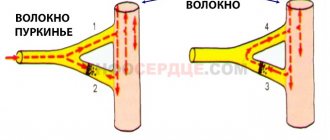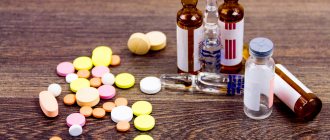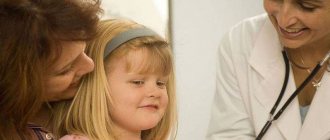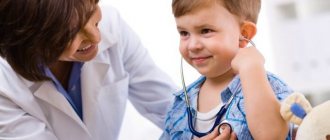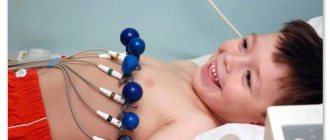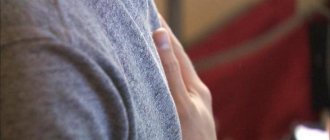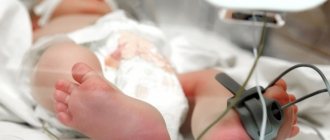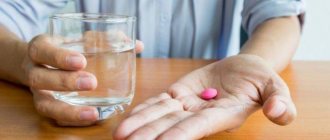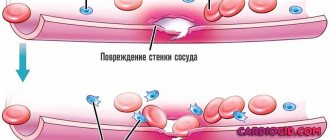0
Author of the article: Marina Dmitrievna
2017.06.03
206
Arrhythmia
All cardiac arrhythmias observed in children are classified as extrasystoles, which can be single or paired. Extraordinary contractions occur due to an extraneous signal received by the heart muscle. In a normal situation, the contraction signal comes from the sinus node, and during extrasystoles - from the myocardium or the conduction system of the heart.
Babies may have abnormal heartbeats because their bodies are undergoing major changes due to constant and active development.
Characteristics of extrasystole in children
One of the most common types of arrhythmias among children is extrasystole (75% of cases). This term refers to a disruption of the normal heart cycle due to its premature excitation and contraction. This condition may be a normal variant or a pathology, and therefore requires a thorough examination of young patients.
Ventricular extrasystole is most common at an early age. This is due to the widespread prevalence of vegetative-vascular dystonia among children; it is considered one of the main causes of the development of this arrhythmia.
What it is?
Extrasystole is a type of cardiac arrhythmia that is accompanied by extraordinary contractions of the myocardium that do not fit into the usual rhythm. Premature contractions are called extrasystoles. Some of their isolated manifestations are normal, but if they become permanent, they already cause concern.
In children, pathology can occur at any age and sometimes threatens with serious problems with blood circulation and changes in the pumping function of the heart muscle.
Classification and symptoms
The modern classification of the disease is based on the localization of pathological foci of excitation (atrial, atrioventricular, ventricular), the number of extrasystoles (rare, frequent) and the number of abnormal zones (mono- and polytopic, group). There are also polymorphic extraordinary contractions, in which the impulse is generated by one source, but different complexes are recorded on the ECG.
Atrial extrasystoles appear when a focus of excitation occurs in the upper, middle or lower part of the atria. Myocardial contraction out of turn, caused by a signal emanating from the interatrial septum, is called supraventricular or supraventricular.
Atrioventricular extrasystole occurs when pathological excitation is generated by the atrioventricular node. Another name found in the literature is nodal extrasystole.
With ventricular extrasystole, the stimuli for heart contraction come from the area of the corresponding sections of the myocardium (right or left) or from the septum between them. They can be rare, up to 30/hour, and frequent - more than 30/hour. In the second case, premature contractions indicate a serious pathology; this condition is dangerous for the development of complications.
Due to its asymptomatic course, the pathology is often detected by the pediatrician by chance during routine examinations or when parents contact them about other issues. Children's complaints are nonspecific. They are as follows:
- weakness;
- fatigue;
- decreased appetite;
- weather dependence;
- poor sleep;
- discomfort in the cardiac region;
- inattention;
- memory impairment.
You can assume extrasystoles in a child if the following symptoms are present: a feeling of a “blow” in the chest, a feeling of a sinking heart, interruptions in its work. In severe cases, the disease can occur with signs of left ventricular heart failure and ventricular fibrillation. In newborns and infants, extrasystole is manifested by sleep disturbances, whims, breast refusal, and poor sucking.
Mechanism of extraordinary reductions
As we have already found out, the heart has four chambers. The atria contain the main source of excitation - the sinus node. With extrasytoles, another additional ectopic focus of excitation appears, which sets an additional rhythm. It may appear due to the above reasons.
- The vagus nerve also plays a role. Its increased activity suppresses the functioning of the sinus node. This can occur with dystonia, physical, emotional stress;
- Along with this, there is another mechanism for the development of extrasystoles - re-entry of the impulse. When the impulse passes through the atria and ventricles, it then returns and again causes additional excitation.
Causes
The causes of extrasystole in children are divided into physiological and pathological. The first include factors whose development is due to compensatory activation of the body. Against the background of tachycardia, with emotional outbursts or physical activity, single extrasystoles occur that pass at rest. Their formation should not be a cause for concern. In adolescents, the appearance of arrhythmia may be associated with drinking alcohol or smoking. Often their development is due to the rapid growth of the body during puberty, after which they disappear.
Pathological causes include the following phenomena:
- diseases of the thyroid gland (hyperthyroidism, thyroiditis);
- abnormalities of heart development;
- symptoms of intoxication due to colds;
- heart diseases (myocarditis, pericarditis, rheumatism, cardiomyopathies);
- autoimmune diseases;
- traumatic injury to the chest;
- dyskinesia of the digestive tract;
- complication during childbirth (damage to the central nervous system);
- hypoxia of the child’s nervous system during artificial feeding;
- insufficient intake of microelements into the body (sodium, potassium, magnesium, calcium);
- side effects of medications (antispasmodics, glucocorticosteroids, antidepressants, diuretics).
Complications
The child may get tired quickly and have difficulty with physical activity. Fainting can lead to injury. The most serious complications of extrasystole are death. It can develop due to a severe disruption of the heart. To prevent this, you need to exclude sports and any emotional stress during therapy.
Extrasystole in children can have a lot of underlying causes. Discovering its origin can take a lot of effort. Extraordinary contractions can be cured only by removing the disease that caused them. Lack of treatment measures will lead to serious consequences, including death.
Diagnostics
Extrasystole is often an incidental finding during examination of a patient. The doctor can suspect its presence by the characteristics of the pulse and changes in heart sounds during auscultation. In a phonedoscope, premature contraction of the myocardium is heard as one loud tone or two, following each other. In this case, the first sounds more clearly than the second. The pulse wave propagates unevenly, there are pauses after an extraordinary shock.
The pediatrician finds out what the child is complaining about, whether there are any concomitant diseases, and what medications the patient is taking. This helps the doctor draw up the necessary examination plan. The following laboratory and instrumental diagnostic methods are carried out:
- General and biochemical blood test, urine test;
- pituitary hormones (TSH) and thyroid hormones (T3-T4);
- electrolyte composition of blood;
- ECG;
- Ultrasound of the heart with Doppler;
- daily ECG monitoring (another name for Holter ECG).
The child must be examined by a neurologist or endocrinologist. It is also possible to prescribe provocative tests with beta-blockers to identify the participation of the sympathetic or parasympathetic part of the autonomic nervous system in the development of arrhythmia. If difficulties arise in making a diagnosis, the doctor recommends transesophageal electrocardiography.
Electrocardiographic examination is an important aspect in the diagnosis of extrasystole. An ECG allows you to determine its type, location, frequency of repetitions and the presence of concomitant cardiopathology. Atrial extraordinary contractions are characterized by a change in the P wave (positive, negative or biphasic) and a shortening of the cardiac cycle interval. With nodal ones, a negative P wave and an incomplete compensatory pause are recorded before/after the QRS complex. Ventricular extrasystoles differ from the others by the presence of a pause that occurs after their registration and is equal to two normal contractions, a change in the QRS complex and the absence of the P wave.
The absence of extrasystole at the time of taking an ECG does not yet prove that it does not exist. To detect extraordinary contractions, Holter ECG monitoring is performed for 24 hours. In this case, the activity of the heart outside the hospital is studied. The study makes it possible to detect hidden extrasystoles, establish their type and duration, frequency of occurrence and connection with the child’s circadian rhythm. They are often recorded during deep sleep or during physical activity.
Types of arrhythmias
There are changes of a functional nature - manifestations that occur in children in the process of life; they do not pose a threat to life and do not require specific treatment. Changes of a pathological nature are when this disease occurs due to organic changes in the heart; such a condition requires mandatory medical supervision and treatment.
The first detected extrasystoles are observed in a child aged three to five years, during a period of intensive growth of cardiogenic structures. The second critical age is from ten to fifteen years. In healthy children, extrasystoles normally occur no more than 40 contractions per hour.
This pathology can be combined with other types of arrhythmias.
Bradyarrhythmia is a condition in which the heart rhythm is disrupted and the contraction rate becomes less than 60 beats per minute. In childhood, we encounter respiratory bradyarrhythmia - this is when the heart rate slows down during exhalation.
Supraventricular extrasystoles arise from the upper parts of the atria at the level of the SA node and are characterized by a deformed P wave with subsequent formation of the cardiac complex. Lower atrial extrasystoles occur in the middle and lower parts of the atrium, which is displayed on the ECG as a negative P wave. If changes are detected on the electrocardiogram, the child should be under the supervision of a doctor to determine the nature of the arrhythmia.
Treatment
Usually there is no reason for parents to worry. Single extraordinary myocardial contractions do not require drug treatment. Their presence during the newborn period may be associated with feeding habits. Artificial formulas do not always correspond to the composition of mother's milk, which leads to insufficient supply of nutrients to the growing body. As a result, tissue hypoxia of the cardiovascular and nervous systems develops. These extrasystoles can be eliminated by feeding the baby highly adapted foods. These mixtures are described in detail on Dr. Komarovsky’s website.
The following types of extrasystole are dangerous:
- frequent extrasystoles (more than 200 per day) according to a Holter study;
- supraventricular premature beats of the heart;
- polymorphic and polytopic types of disorders;
- arrhythmias that cause a deterioration in the child’s well-being.
Patient management tactics are determined after a full examination and clarification of the cause of their occurrence. In the presence of pathology of the cardiovascular structure, the attending physician is a cardiologist, in case of damage to the nervous system, a neurologist. They prescribe appropriate therapy.
Extrasystoles arising due to dysregulation of the nervous system or the predominance of sympathetic/parasympathetic innervation require the prescription of nootropic and metabolic drugs. The mechanism of their action is to protect nerve cells from various pathogenic factors (hypoxia, trauma, toxins) and to accelerate intracellular metabolic processes. This group of drugs includes Noofen, Pantogam, Piracetam, Noopept. To improve the functioning of the heart muscles, Cardonat, Asparkam, and Magnesium B6 can be prescribed. The dosage and method of administration are selected individually by the doctor. The course of taking the medication lasts 3 months and is repeated twice a year.
In the presence of extrasystoles in a risk group, accompanied by a clinical picture of heart rate disturbances, the cardiologist prescribes antiarrhythmic therapy. Exceeding recommended dosages may lead to side effects. Among the drugs aimed at eliminating abnormal heart rhythms, Concor, Amiodarone, Ri, Verapamil, Obzidan are used in children.
Also, the treatment package should include taking vitamins and psychotherapy. The doctor may exclude you from physical education if a connection is determined between the load and the appearance of extraordinary heart contractions. Children with extrasystole are monitored by a cardiologist and should be examined twice a year. In such patients, it is mandatory to take an ECG at the next visit to the doctor.
Prevention
For prevention purposes, the following recommendations should be followed:
- avoid stress;
- normalize the activity/rest regime;
- get rid of bad habits;
- maintain proper and balanced nutrition;
- play sports (football, gymnastics, swimming), walk in the fresh air;
- Take medications prescribed by your doctor regularly.
The diet of children with this pathology should include foods containing large quantities of vitamins and microelements (magnesium, potassium). They are found in baked potatoes, apricots, dried fruits, and prunes. To improve nervous regulation, it is recommended to include selenium-rich foods in the menu - nuts, olive oil, seafood, legumes, oatmeal, buckwheat porridge.
